Colosseum tours:Experiences to Book for First-Time Visitors
Ciao friends! I'm Jack, your local Italian guide who's lived just 5 minutes from the Colosseum for over a decade. Last week, I watched yet another group of tourists miss the hidden underground chambers because they chose the wrong tour - it broke my heart like when I first saw visitors pay triple price for last-minute tickets. Having personally tested every tour route from moonlight walks to gladiator experiences, I'm sharing this ultimate guide to help you dodge tourist traps. Whether you crave spine-tingling underground access or want to stand where warriors once battled, these carefully curated tips will transform your Colosseum visit from basic to breathtaking. After all, this isn't just ancient history - it's my neighborhood's living legend!
目录
Historical Background
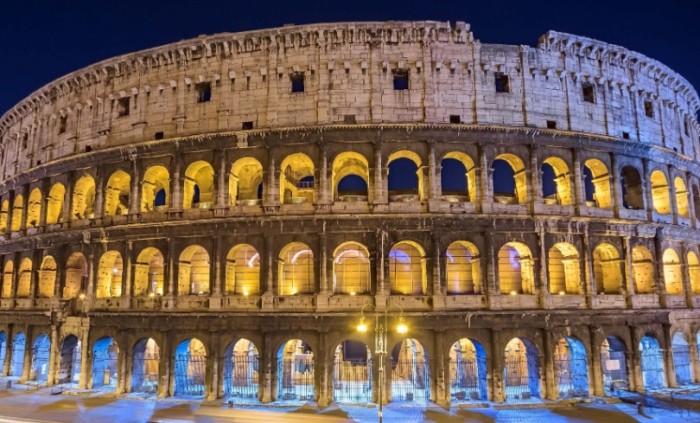
The Birth of the Colosseum
The Colosseum, originally known as the Flavian Amphitheatre, was commissioned by Emperor Vespasian of the Flavian dynasty in AD 72 and completed by his son, Titus, in AD 80. This monumental structure was built on the site of Nero's Golden House, symbolizing a return to public use after the extravagances of Nero's reign.
Purpose and Use
The Colosseum was primarily used for gladiatorial contests, public spectacles, and animal hunts. It could seat up to 50,000 spectators and was a central part of Roman public life. The arena was a stage for dramatic and often brutal events that entertained the masses and showcased the power of the Roman Empire.
Architectural Marvel
The Colosseum's design is a testament to Roman engineering and architecture. It features a complex system of vaults, arches, and tiers that allowed for efficient crowd movement and provided excellent sightlines for all spectators. The outer wall, made of travertine stone, stands as a reminder of the empire's grandeur.
Decline and Rediscovery
Over the centuries, the Colosseum fell into disrepair due to natural disasters, looting, and neglect. However, it was never completely forgotten. In the 18th century, efforts began to preserve and restore the structure, and it has since become a symbol of Rome and a UNESCO World Heritage Site.
Cultural Significance
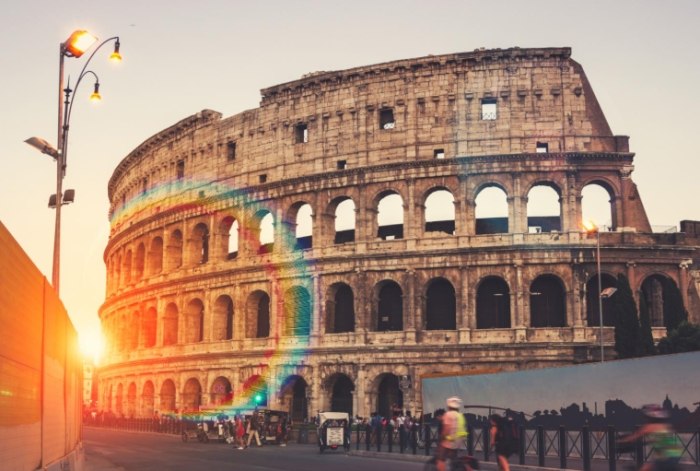
Symbol of Rome
The Colosseum is more than just an ancient ruin; it is a symbol of Rome's enduring legacy. It represents the power, culture, and innovation of the Roman Empire and continues to inspire awe and wonder in visitors from around the world.
Cultural Events
Today, the Colosseum hosts various cultural events, including concerts, theatrical performances, and historical reenactments. These events bring the ancient arena to life and offer a unique way to experience its history and cultural significance.
Educational Opportunities
The Colosseum is also an important educational resource. Schools, universities, and research institutions use the site to teach about ancient Roman history, architecture, and society. Guided tours and educational programs provide visitors with a deeper understanding of the Colosseum's role in Roman culture.
Natural and Humanistic Landscapes
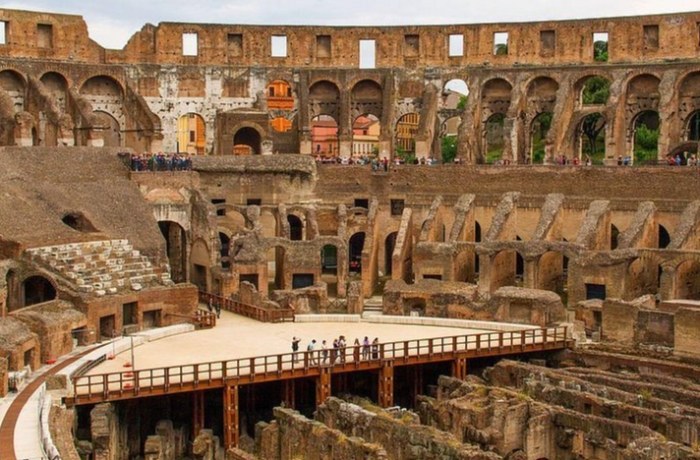
Surrounding Area
The Colosseum is located in the heart of Rome, surrounded by other historic landmarks such as the Roman Forum, the Arch of Constantine, and the Palatine Hill. The area is rich in history and offers a glimpse into the daily life of ancient Romans.
Views and Vistas
From the Colosseum, visitors can enjoy stunning views of the Roman skyline, including the dome of St. Peter's Basilica in the distance. The surrounding gardens and parks provide a peaceful retreat from the hustle and bustle of the city.
Light and Shadow
The Colosseum's architecture creates a beautiful interplay of light and shadow throughout the day. The changing light conditions add to the drama and mystery of the site, making it a popular spot for photographers and artists.
Operating Hours and Ticket Prices
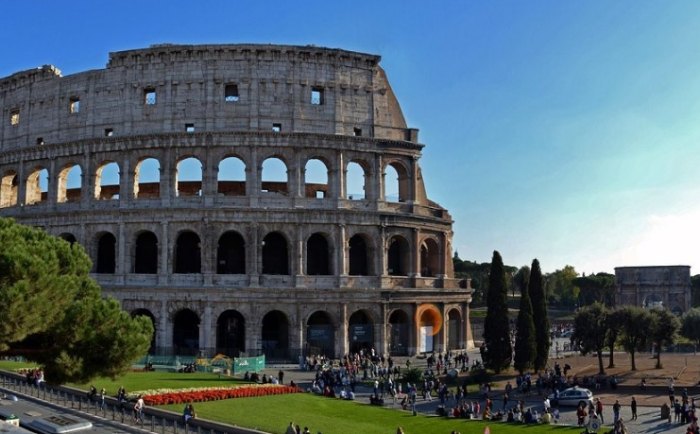
Operating Hours
The Colosseum's operating hours vary depending on the season. Generally, it is open from 8:30 AM to one hour before sunset. During peak tourist seasons, such as summer, the Colosseum may stay open later. It is always a good idea to check the official website for the most up-to-date information.
Ticket Prices
Ticket prices for the Colosseum also vary depending on the type of ticket and the time of year. Here is a breakdown of the different ticket options:
| Ticket Type | Price (€) |
| Standard Ticket | 16 |
| Reduced Ticket (for students, seniors, and children aged 6-17) | 2 (plus reservation fee) |
| Free Entry (for children under 6 and EU citizens under 18) | 0 |
| Colosseum, Roman Forum, and Palatine Hill Combined Ticket | 24 |
Reservations
It is highly recommended to make reservations in advance, especially during peak tourist seasons. Reservations can be made online through the official website or through authorized tour operators. Making a reservation ensures that you have a guaranteed entry time and helps to avoid long lines.
Transportation Routes
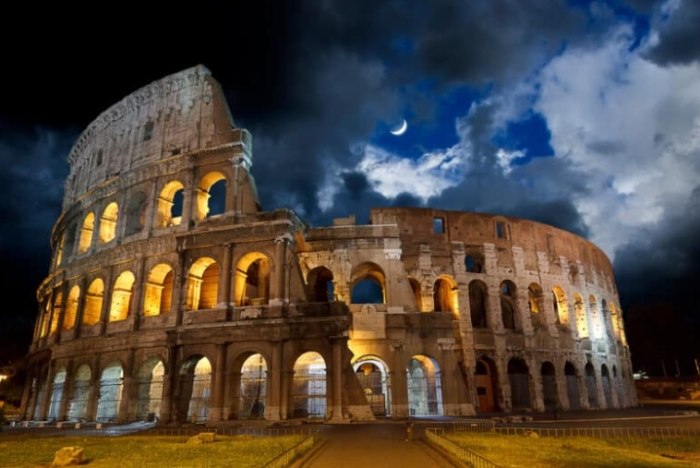
By Public Transport
The Colosseum is easily accessible by public transport. The nearest metro station is Colosseo, which is served by Line B. From the station, it is just a short walk to the Colosseum. Buses also stop near the Colosseum, including routes 60, 75, 85, 87, 117, and 271.
By Car
If you are driving to the Colosseum, there are several parking garages in the area. However, parking in central Rome can be expensive and challenging, so it is often more convenient to use public transport.
By Bike
Rome is a bike-friendly city, and renting a bike is a great way to explore the city at your own pace. There are several bike rental shops near the Colosseum, and cycling allows you to see more of the city while avoiding traffic congestion.
Best Times to Visit
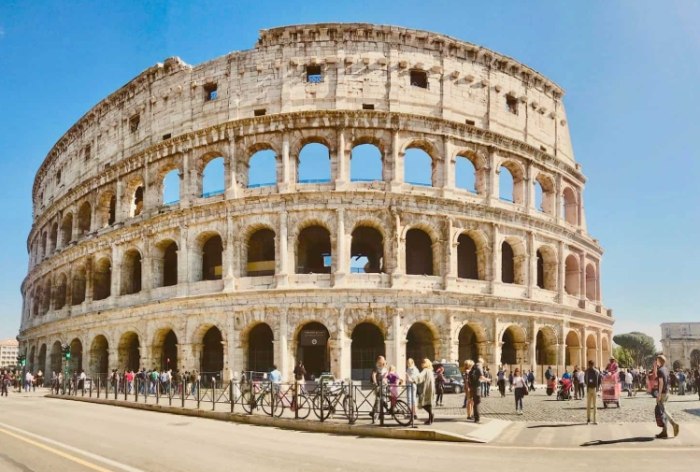
Seasonal Considerations
The best time to visit the Colosseum depends on your preferences. Spring (March to May) and autumn (September to November) are generally considered the best times to visit, as the weather is mild and the crowds are smaller. Summer (June to August) can be very hot and crowded, while winter (December to February) can be cold and rainy.
Time of Day
The Colosseum is less crowded in the early morning or late afternoon. Visiting during these times allows you to enjoy the site without the large crowds and also provides better lighting for photography.
Special Events
If you are interested in attending a special event at the Colosseum, such as a concert or historical reenactment, check the event schedule in advance and plan your visit accordingly.
Unique Activities and Experiences
Guided Tours
Guided tours are a great way to learn more about the Colosseum's history and architecture. There are several types of guided tours available, including group tours, private tours, and special interest tours. Some tours also include access to restricted areas, such as the underground chambers or the upper tiers.
Night Tours
Night tours offer a unique and atmospheric experience of the Colosseum. The arena is illuminated at night, creating a magical and mysterious ambiance. Night tours are often less crowded than daytime tours and provide a different perspective on the site.
Virtual Reality Tours
For those who want to experience the Colosseum in a more immersive way, virtual reality tours are available. These tours use cutting-edge technology to transport visitors back in time and allow them to see the Colosseum as it was in ancient Rome.
Accommodation Recommendations
Luxury Hotels
If you are looking for a luxurious stay in Rome, there are several hotels near the Colosseum that offer top-notch amenities and services. Some of the best luxury hotels in the area include the Hotel Artemide, the Hotel Eden, and the Hotel de Russie.
Boutique Hotels
Boutique hotels offer a more personalized and intimate experience. These hotels often have unique designs and a focus on local culture and history. Some boutique hotels near the Colosseum include the Hotel Palazzo Manfredi, the Hotel Forum, and the Hotel Locarno.
Budget-Friendly Options
For travelers on a budget, there are also several affordable accommodation options near the Colosseum. Hostels, guesthouses, and budget hotels offer comfortable rooms at reasonable prices. Some popular budget-friendly options include the Yellow Hostel, the Generator Rome, and the Hotel Aventino.
Culinary Delights
Traditional Roman Cuisine
Rome is known for its delicious traditional cuisine, and there are several restaurants near the Colosseum where you can sample authentic Roman dishes. Some must-try dishes include carbonara (pasta with eggs, cheese, and bacon), cacio e pepe (pasta with cheese and pepper), and supplì (fried rice balls filled with mozzarella).
Local Markets
For a more authentic culinary experience, visit one of Rome's local markets. The Mercato di Testaccio and the Mercato Centrale are two popular markets where you can find fresh produce, meats, cheeses, and other local specialties. You can also sample street food and snacks at the market stalls.
Wine Bars
Rome is also famous for its wine, and there are several wine bars near the Colosseum where you can enjoy a glass of local wine and some small plates. Some popular wine bars include Enoteca Ferrara, Il Goccetto, and Trimani Il Winebar.
Important Tips and Considerations
Dress Code
When visiting the Colosseum, it is important to dress appropriately. Comfortable shoes are a must, as there is a lot of walking involved. Avoid wearing shorts, tank tops, or revealing clothing, as these may not be allowed in some areas of the site.
Safety
Like any major tourist destination, the Colosseum area can be crowded and busy. Be aware of your surroundings and keep an eye on your belongings. Avoid carrying large amounts of cash or valuable items with you.
Accessibility
The Colosseum is partially accessible for visitors with disabilities. There are ramps and elevators available to help visitors navigate the site. However, some areas may still be difficult to access due to the uneven terrain and historical nature of the building.
Photography
Photography is allowed at the Colosseum, but the use of tripods or selfie sticks may be restricted in some areas. Be respectful of other visitors and avoid blocking pathways or sightlines while taking photos.
Q&A
1. What is the best tour for the Colosseum?
The best tour for the Colosseum depends on your interests and preferences. If you want a comprehensive overview of the site's history and architecture, a guided group tour is a great option. For a more personalized experience, a private tour allows you to tailor the tour to your specific interests. If you are interested in accessing restricted areas, such as the underground chambers or the upper tiers, look for a tour that includes these areas.
2. Is the Colosseum floor tour worth it?
The Colosseum floor tour is definitely worth it for those who want a more in-depth experience of the site. The floor tour takes you down to the arena level, where you can see the original flooring and the underground chambers where gladiators and animals were kept before the events. This tour provides a unique perspective on the Colosseum and allows you to imagine what it was like to be a spectator or a participant in the ancient games.
3. How much does a Colosseum tour cost?
The cost of a Colosseum tour varies depending on the type of tour and the tour operator. Group tours typically range from €20 to €50 per person, while private tours can cost anywhere from €100 to €300 or more. Tours that include access to restricted areas or special experiences, such as night tours or virtual reality tours, may be more expensive.
4. What is the best way to tour the Colosseum?
The best way to tour the Colosseum is to plan ahead and make reservations in advance. This ensures that you have a guaranteed entry time and helps to avoid long lines. Consider taking a guided tour to learn more about the site's history and architecture, and choose a tour that suits your interests and budget. Whether you prefer a group tour, a private tour, or a special experience, there is a Colosseum tour that is right for you.